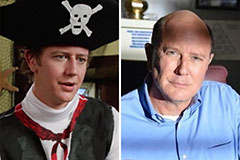Expanded Access, Same Premium Quality
Esteemed for its commitment to excellence, MyCigarsASAP.com provides a premium lineup of curated cigars from celebrated brands in the industry. With the expansion into West Hollywood, the company proceeds to offer prompt access to a vast array of luxury cigars, maintaining the same high standards of quality control that have made it a trusted name among cigar enthusiasts.
Cigar Delivery West Hollywood
CALL (800) 654-7959
Cigar connoisseurs in West Hollywood can opt for popular brands such as: • Arturo Fuente – Providing a broad variety of expertly created cigars. • Montecristo – Known for its silky, even concoctions that cater to multiple flavor preferences. • Cohiba – Known worldwide for providing a flavorful, potent smoking experience. • Davidoff – A mark of luxury, delivering cigars of unmatched reliability and standard. • My Father's Cigars – Delivering strong, intense tastes that draw inspiration from Cuban cigar legacy. • Ashton – Celebrated for its velvety, elegant flavor, produced from the highest quality Dominican tobaccos. • Padron – Known for its strong flavors and exemplary craftsmanship, including the sought-after 1964 Anniversary Series. • Romeo y Julieta – A timeless option renowned for its equilibrated flavors and stable quality.
This varied collection assures that MyCigarsASAP.com fulfills a broad spectrum of desires, with cigars supplied by famous regions like Nicaragua, the Dominican Republic, and Honduras.
Commitment to Freshness and Superiority
Superiority is at the root of MyCigarsASAP.com’s procedures. To guarantee each cigar reaches perfect condition, the company adopts strict quality control measures, including precisely controlled storage and individually picked inventory. Every delivery is handled meticulously, ensuring that the cigars are brought fresh and rich in flavor. Additionally, their staff of cigar experts is on hand to supply bespoke suggestions, creating a personalized and informative experience for each customer.
Quick and Easy Delivery to West Hollywood
With this current service enlargement, MyCigarsASAP.com affirms its position as one of the swiftest premium cigar delivery services in the region. Whether for a instant celebration, a prearranged event, or a tranquil night of rest, patrons in West Hollywood can now experience swift cigar deliveries within 30 to 60 minutes of making an order. This quick response presents a increased comfort to West Hollywood’s cigar enthusiasts.
Cigar Delivery West Hollywood
CALL (800) 654-7959
About MyCigarsASAP.com
MyCigarsASAP.com is a Los Angeles-based cigar delivery service passionate about delivering swift, consistent access to a top-notch variety of cigars. With a emphasis on quality, freshness, and personalized service, the company has earned a reputation as a trusted source for cigar lovers across the region. Now, with augmented service to West Hollywood, MyCigarsASAP.com persists in pioneering the delivery of fine cigars speedily and precisely.
For more intel or to order now for quick delivery, call (800) 654-7959.
Cigar Commencement and History: A Voyage Through Ages
Cigars, often connected with affluence, practice, and craftsmanship, bear a deep legacy extending hundreds of years. The evolution of cigars reflects the merging of peoples, navigation, and business barter. This write-up studies the compelling genesis and past of cigars, documenting their progression from native rites in the Americas to transforming into a worldwide sign of refinement.
The Primeval Genesis: Cigars in Pre-Columbian Cultures Cigars have their earliest source in the native peoples of the Americas. Historic communities, including the Mayans, Aztecs, and Taínos, are recognized to have consumed rolled tobacco blades. Archaeological evidence expose images of Mayans enjoying on pottery objects going back to as early as the 10th century. The designation “cigar” seemingly derives from the Mayan expression “sikar,” which indicates to smoke.
In these ancient societies, tobacco was not only a casual product but also held mystical significance. Mystics and tribal leaders smoked tobacco during sacred traditions, holding it allowed them to communicate with the spiritual world. Tobacco was also used healingly, offering easing for various maladies, such as cephalalgias and digestive issues.
Tobacco’s Introduction to Europe: Columbus and the New World The European past of cigars started with Christopher Columbus’s advent in the Americas in 1492. His crew discovered original people enjoying twists of dehydrated tobacco greens, an new practice that puzzled them. Columbus and his men collected portions back to Spain, marking the inception of Europe’s affiliation with tobacco.
The practice of consuming quickly grew across Europe. Spaniards accepted it first, and by the 16th century, tobacco use evolved into popular among European aristocrats. Early cigars were primitive compared to modern versions, but their draw moved to Italy, Portugal, and France. Tobacco was also viewed as a miracle remedy, considered to heal a range of sicknesses from chills to exhaustion.
Cuban Influence: Birthplace of the Modern Cigar Cuba’s part in cigar heritage is essential, turning tobacco from a local commodity into a planetary phenomenon. In the 17th century, Cuba evolved into the epicenter of cigar fabrication due to its optimal climate and fertile soil, particularly in the Vuelta Abajo region. Cuban cigars quickly achieved a renown for unparalleled quality and workmanship.
By the 1800s, the Cuban cigar industry was flourishing, and the term “Havana cigar” transformed into synonymous with excellence. Expert artisans, known as torcedores, fashioned cigars by hand, refining techniques that endure largely unchanged today. Many of the world’s most renowned cigar brands, such as Montecristo, Cohiba, and Romeo y Julieta, connect their roots to this era.
The Proliferation to North America and Europe The need for cigar s extended beyond Cuba’s borders by the 18th and 19th centuries. Tobacco plantations began arising in other Caribbean islands, such as the Dominican Republic and Jamaica, as well as parts of Central America, including Honduras and Nicaragua. These regions remain cigar giants today, each imparting unique characteristics to their products.
In Europe, Spain and the Netherlands evolved into important consumers and producers of cigars. The Dutch created a thriving cigar industry, importing Cuban tobacco and integrating it with local leaves to make particular styles. Meanwhile, cigar puffing in the United States was connected with status and masculinity. The rise of industrialization saw cigar factories multiply across the U.S., particularly in Florida, where Cuban immigrants conveyed their craftsmanship and traditions.
Cigars and Social Status: From Aristocracy to the Everyday Man Throughout past, cigars have been closely associated to status, wealth, and celebration. By the 19th century, cigars were a regular among European and American aristocrats. great post to read Monarchs such as King Edward VII of England were well-known cigar fans, further raising their popularity among the elite.
In the United States, cigars became linked to political power and business success. Industrial magnates like Andrew Carnegie and John D. Rockefeller were often pictured inhaling cigars, strengthening their image as emblems of wealth. Prominent figures such as Winston Churchill famously espoused cigars, supplementing to their prestige.
However, cigars were not confined to the upper class. The growth of the cigar industry led to the making of budget-friendly options, making cigars within reach to the working class. Cigar clubs and lounges surfaced, offering areas where people from all walks of life could partake in a smoke.
The Cuban Embargo and the Rise of New Markets The Cuban cigar industry experienced a major turn in 1962 when the U.S. government, under President John F. Kennedy, instituted a trade embargo on Cuba. Cuban cigars, previously a mainstay among American cigar fans, became illegal in the U.S., creating both scarcity and mystique around them. As a result, many Cuban cigar makers fled to neighboring countries like the Dominican Republic, Nicaragua, and Honduras, where they continued their trade using Cuban-seed tobacco.
This geopolitical change unlocked new markets and added to the rise of premium cigars outside Cuba. Today, cigars from these regions are renowned for their quality, competing with Cuban cigars in flavor, construction, and diversity.
Cigars in Popular Culture and Cinema Cigars have solidified their place in popular culture, often representing power, victory, and sophistication. Hollywood adopted the cigar as an icon, featuring it prominently in films. Characters like Tony Montana in Scarface and Winston Churchill in The Darkest Hour continue the association between cigars and authority.
Moreover, cigars are a staple at celebrations, marking occasions such as weddings, business deals, and the birth of children. Cigar lounges and clubs continue to serve as hangouts for socializing and networking, supporting their cultural relevance.
The Modern Cigar Renaissance The late 20th and early 21st centuries have noted a rebirth of cigar culture. The 1990s “Cigar Boom” in the U.S. saw a reinvigorated interest in premium cigars, with new enthusiasts joining the scene. Artistry, diversity in blends, and artisanal techniques have advanced the modern cigar renaissance.
Craft cigar brands have secured popularity, offering singular blends that captivate to a growing demographic of younger smokers. Additionally, the rise of cigar lounges and online cigar shops has made it more straightforward for consumers to sample different varieties from around the world. Events like Cigar Aficionado’s Big Smoke further exhibit the timeless appeal of cigars in contemporary culture.
Cigars and Sustainability: The Future of the Industry As the cigar industry advances, sustainability has become a priority. Environmental factors, including climate change and deforestation, modify tobacco cultivation. Many cigar manufacturers are employing eco-friendly practices by using sustainable farming methods and promoting reforestation efforts.
Fair labor practices are also growing, with companies securing fair wages and safe working conditions for the farmers click site and artisans involved in cigar production. The emphasis on sustainability endeavors to maintain the industry’s legacy while accommodating the expectations of socially conscious consumers.
Conclusion: A Legacy of Tradition and Craftsmanship From the holy traditions of indigenous tribes to the plush lounges of today, cigars have traveled a long and fabled path. Each drag of a premium cigar encapsulates with it the legacy of generations of craftsmanship, tradition, and cultural significance. Whether savored by royalty, industrial tycoons, or modern-day fans, cigars continue to represent more than just tobacco—they encapsulate a lifestyle, a celebration, and a tie to history.
As the world of cigars develops, one thing persists constant: the draw of unwinding, lighting up, and delighting in the artful combination of tradition and innovation enveloped in each leaf.
The Cigar Manufacturing Procedure: A Journey from History to Modern Day
That Cigar Manufacturing Process: An Journey from Past to Present
Introduction
Such a cigar, any timeless symbol of grandeur and polish, has the rich history that spans centuries and continents. From its early origins among first peoples to its modern incarnation as its own global industry, the process of crafting a cigar is one blend of skill, systematic study, and tradition. This article scrutinizes the intricate journey of cigar manufacturing, differentiating the methods of the past with those of today, and showcasing how innovation and heritage interact in this engaging craft.
I. Historical Overview of Cigar Manufacturing
A. Early Origins of Cigars
The history of cigars dates back to the indigenous peoples of the Caribbean and Mesoamerica, who farmed tobacco and used it in religious and medicinal practices. When Christopher Columbus arrived in the New World in 1492, he and his crew perceived the native Taíno people of Cuba and Hispaniola wrapping and smoking dried tobacco leaves. This practice fascinated the Europeans, who carried tobacco back to the Old World, where it quickly earned popularity.
B. Traditional Cigar-Making Techniques
1. Tobacco Cultivation
In the early days, tobacco cultivation was one manual and labor-intensive process. Farmers counted on natural cycles and traditional knowledge to grow tobacco plants. The seeds were sown by hand, and the plants necessitated meticulous care to thrive.
2. Leaf Selection and Fermentation
After harvesting, the tobacco leaves were subjected to a natural air-curing process. They were placed in curing barns to dry slowly, facilitating the chlorophyll to break down and the leaves to develop their characteristic brown color. Fermentation followed, where the leaves were placed in piles called pilones. The natural heat generated by microbial activity lessened harshness and elevated the rich flavors.
3. Rolling Methods
Cigar rolling was a craft passed down through generations. Skilled artisans, known as torcedores, assembled cigars entirely by hand. They selected filler leaves, tied them with a binder leaf, and covered the bunch with a high-quality wrapper leaf. This meticulous process required precision and an eye for quality.
C. The Role of Cuban Cigar Tradition
Cuba became interchangeable with premium cigars due to its ideal climate and soil conditions, particularly in the Vuelta Abajo region. The country's cigar-making techniques defined the standard for quality and craftsmanship. Cuban cigars were in high demand, and the methods developed there guided cigar production worldwide.
II. Modern Cigar Manufacturing Process
A. Advances in Tobacco Cultivation
1. Genetic Selection
Modern agriculture has incorporated genetic selection to augment tobacco plant qualities. Scientists and farmers join forces to develop tobacco strains resistant to diseases and pests, and with desired flavor profiles. This produces more consistent and high-quality crops.
2. Modern Farming Techniques
Today, tobacco farming utilizes advanced irrigation systems, soil management, and crop rotation to maximize yield and quality. Precision agriculture technologies, such as GPS mapping and drones, help monitor plant health and optimize resource use.
B. Leaf Processing Today
1. Fermentation Methods
While the fundamental principles of fermentation persist, modern facilities control temperature and humidity with greater precision. This control secures uniformity and refines flavor development. Some producers utilize multiple fermentation cycles to refine the tobacco further.
2. Aging and Storage
Post-fermentation aging has transformed into a critical step. Tobacco leaves are aged in controlled environments, sometimes for several years, to mellow the tobacco and increase complexity. Aging rooms are equipped with technology to keep ideal conditions.
C. Contemporary Cigar Rolling
1. Machine-Made vs. Hand-Rolled Cigars
The 20th century introduced mechanization to cigar production. Machine-made cigars employ homogenized tobacco leaf (HTL) binders and wrappers, facilitating mass production at lower costs. However, premium cigars persist to be hand-rolled, protecting the artisanal tradition.
2. Quality Control
Modern factories use strict quality control measures. This includes regular inspections, draw testing to ensure proper airflow, and sensory evaluations. Technology helps but does not supplant the expertise of seasoned inspectors.
D. Innovations in Packaging and Distribution
Advancements in packaging materials safeguard cigars from environmental factors during shipping. Vacuum-sealed packaging, humidification devices, and sophisticated distribution logistics guarantee cigars reach consumers in optimal condition.
III. Comparing Past and Present Methods
A. Technological Advances
Technology has improved many aspects of cigar manufacturing without reducing the importance of skilled labor. Mechanization performs repetitive tasks, while artisans concentrate on quality and craftsmanship.
B. Maintaining Tradition in a Modern Industry
Despite technological progress, the essence of cigar-making endures rooted in tradition. Many producers emphasize hand-rolled methods and traditional fermentation to sustain authenticity and fulfill aficionados who appreciate heritage.
C. Challenges and Opportunities
The industry grapples with challenges like regulatory changes, health concerns, and market fluctuations. However, opportunities arise from expanding global markets, premiumization trends, and consumer interest in artisanal products.
IV. The Art of Cigar Making: Preserving Craftsmanship
A. The Role of the Torcedor (Cigar Roller)
Torcedores are revered figures in cigar factories. Their expertise defines the cigar's construction and performance. Training to become a master roller can take years, highlighting the complexity of the craft.
B. Apprenticeship and Skills Transfer
Many factories run apprenticeship programs to convey skills to new generations. This maintains the survival of traditional techniques and protects high standards in production.
C. Cultural Significance
Cigar-making is more than the business; it's the cultural heritage in regions like Cuba, the Dominican Republic, and Nicaragua. Festivals, museums, and tours honor this legacy, inviting enthusiasts worldwide.
The cigar manufacturing process is an captivating blend of time-honored traditions and modern innovations. While technology has established efficiencies and consistency, the heart of cigar-making rests in the hands of skilled artisans who carry forward a legacy that extends over centuries. Grasping this journey amplifies the appreciation of cigars, not just as products but as expressions of cultural heritage and craftsmanship.
 Kelly McGillis Then & Now!
Kelly McGillis Then & Now! Michael J. Fox Then & Now!
Michael J. Fox Then & Now! Anthony Michael Hall Then & Now!
Anthony Michael Hall Then & Now! Judge Reinhold Then & Now!
Judge Reinhold Then & Now! Robin McGraw Then & Now!
Robin McGraw Then & Now!